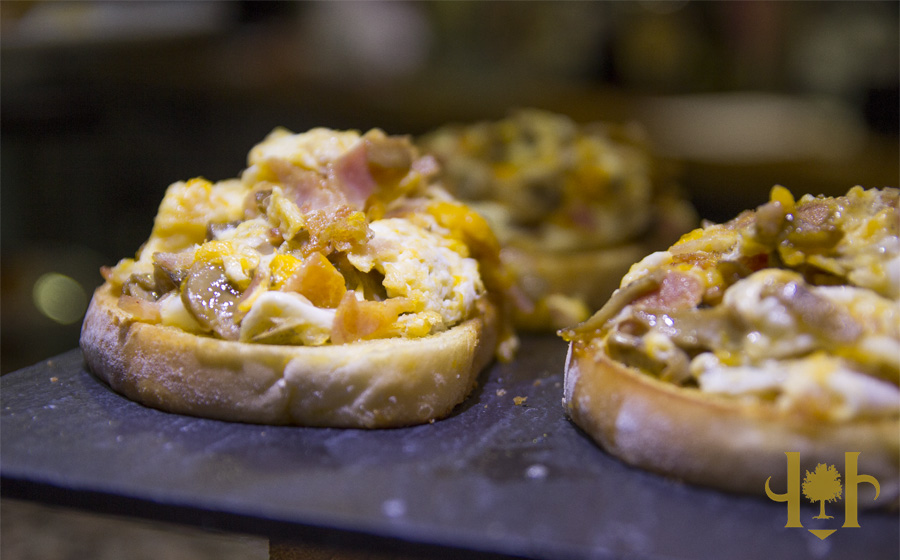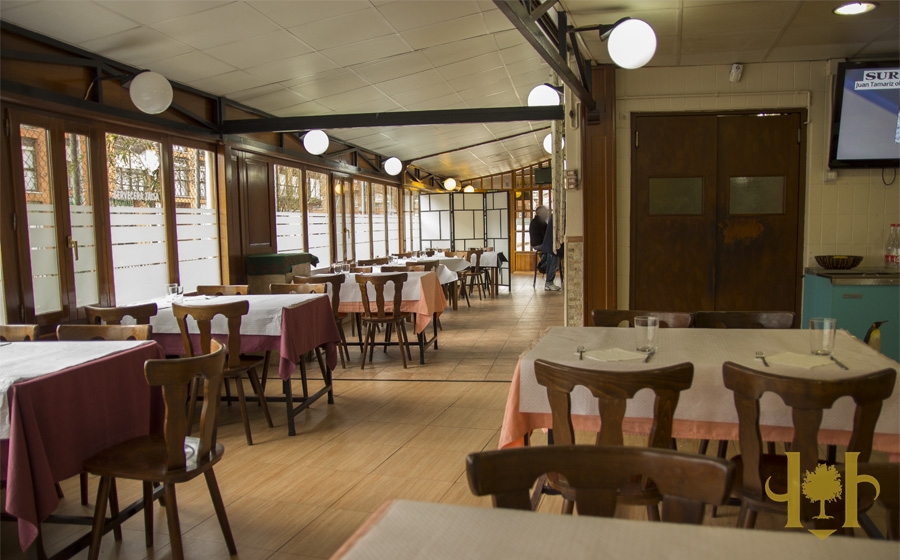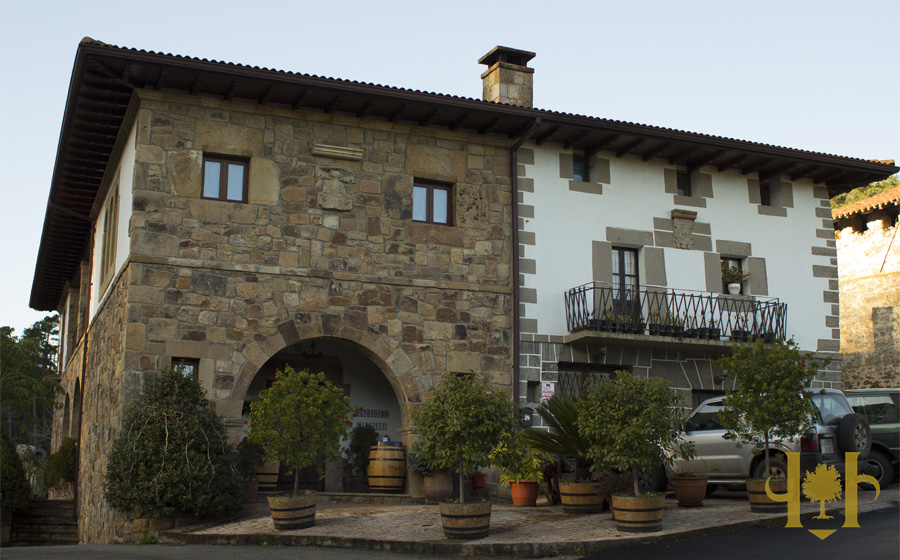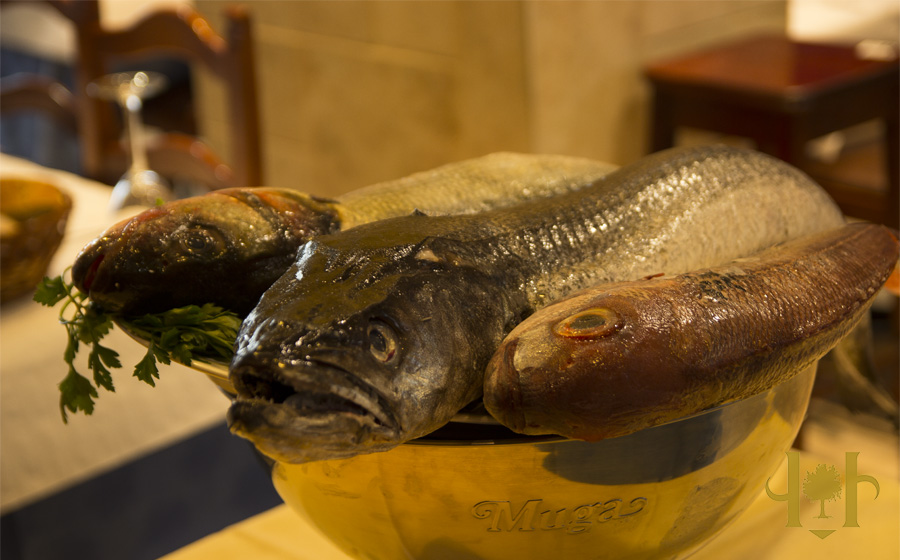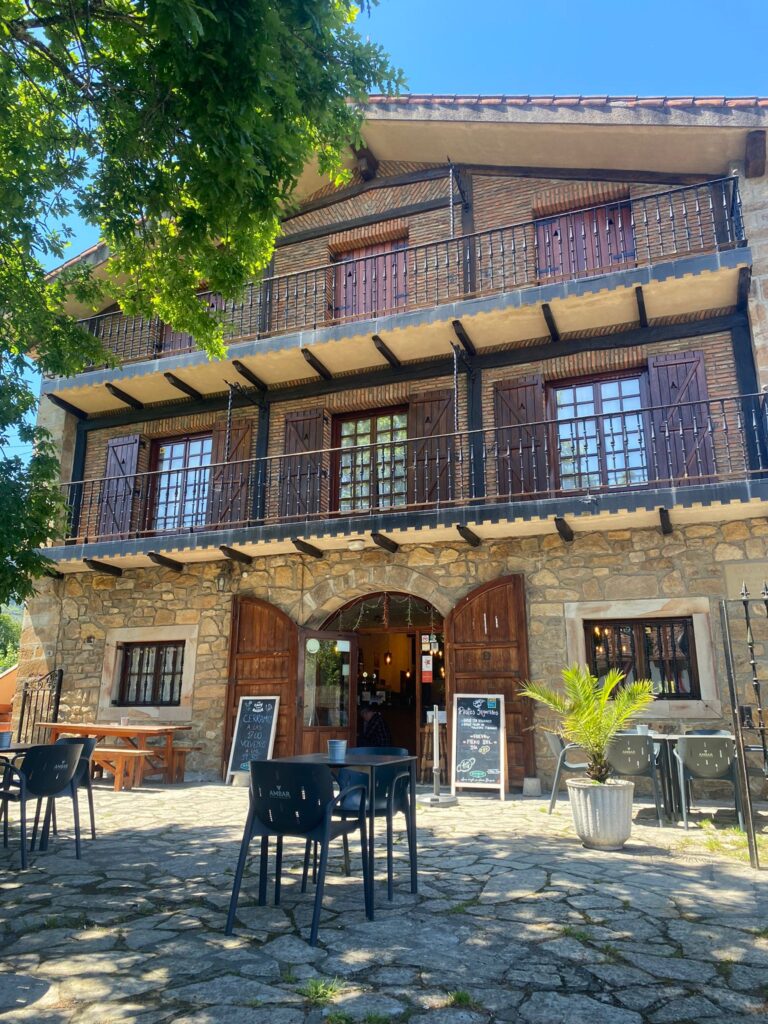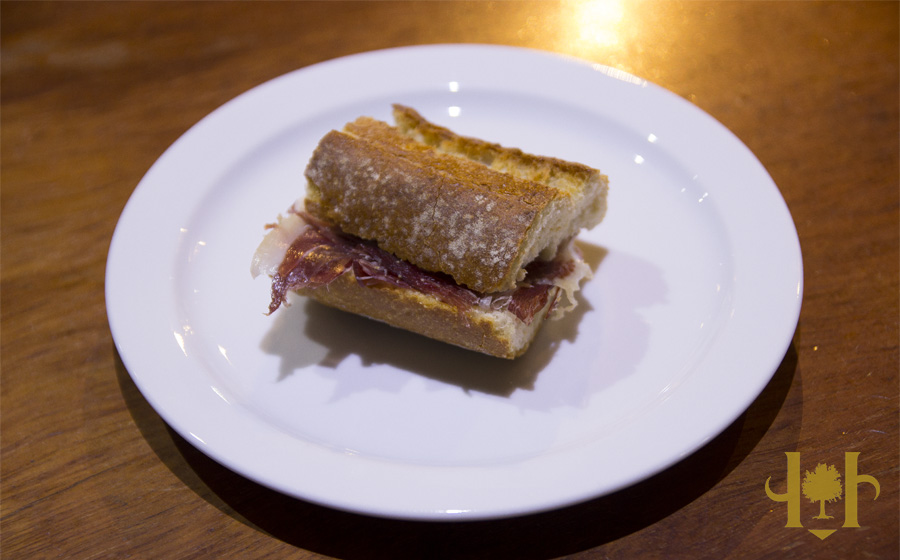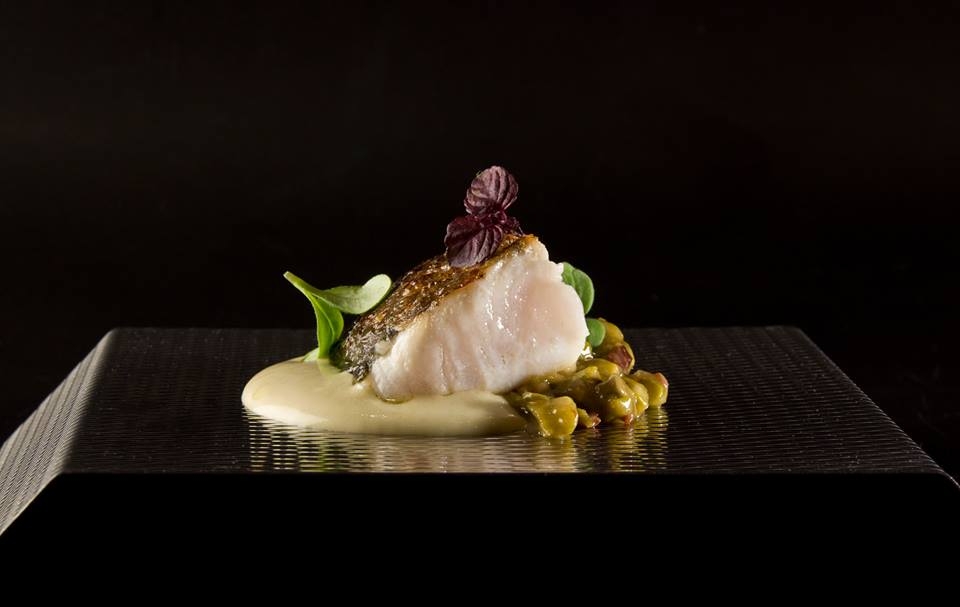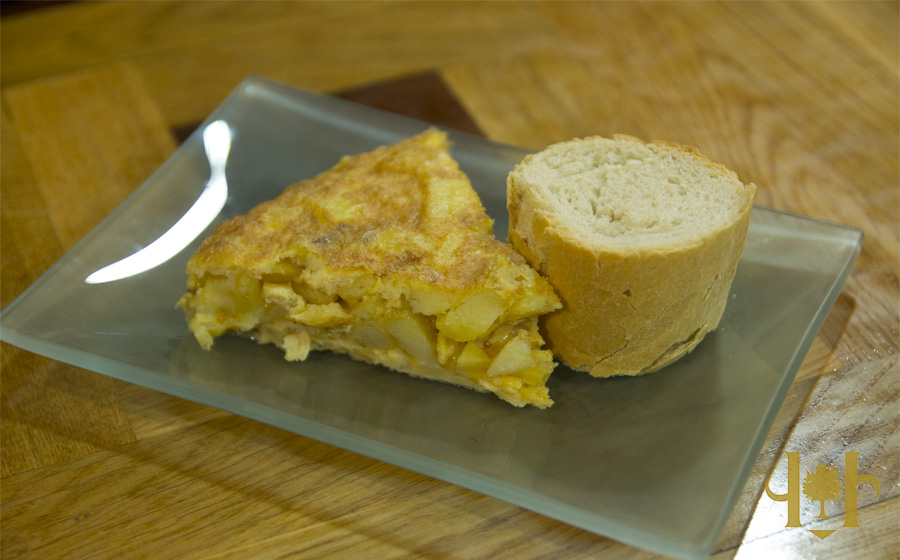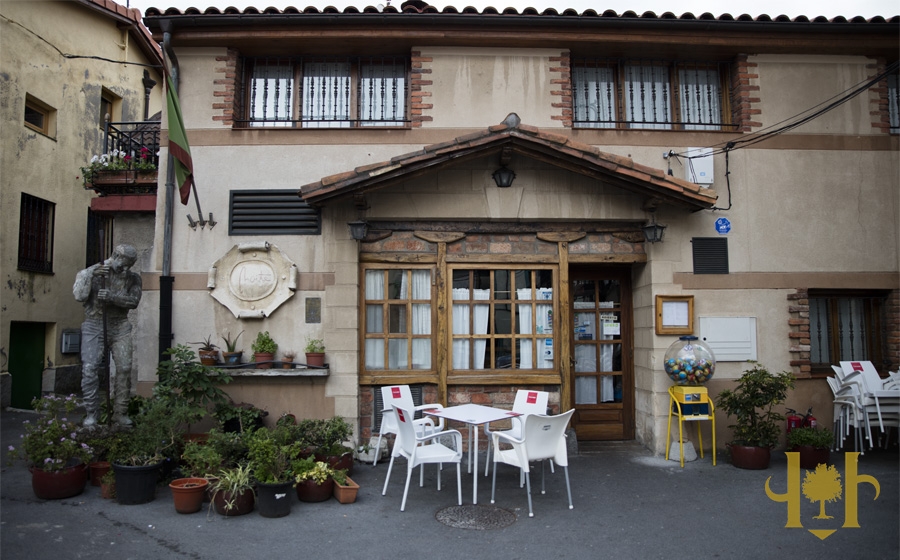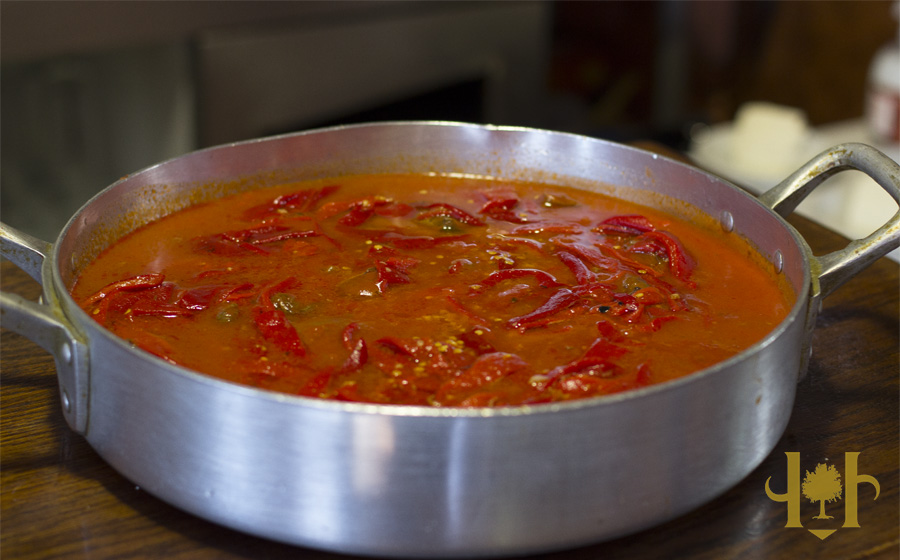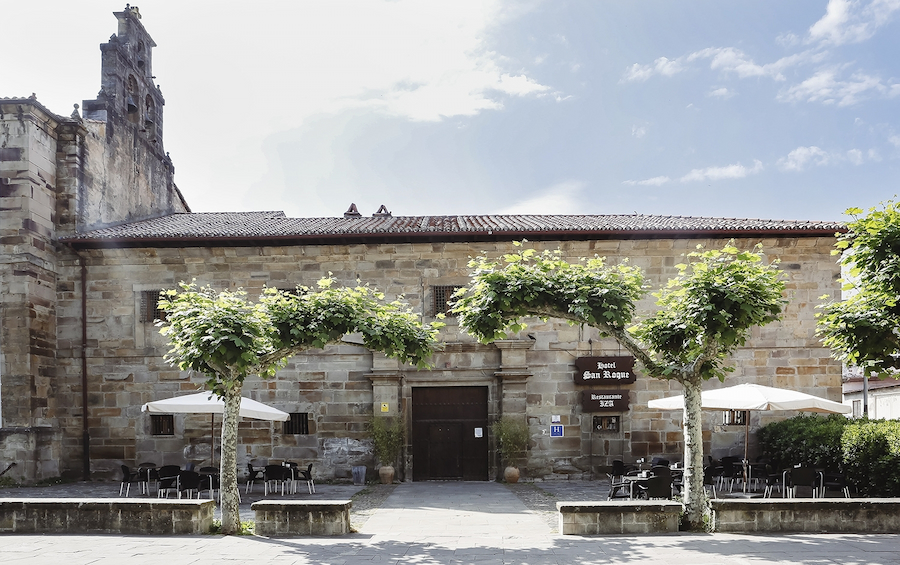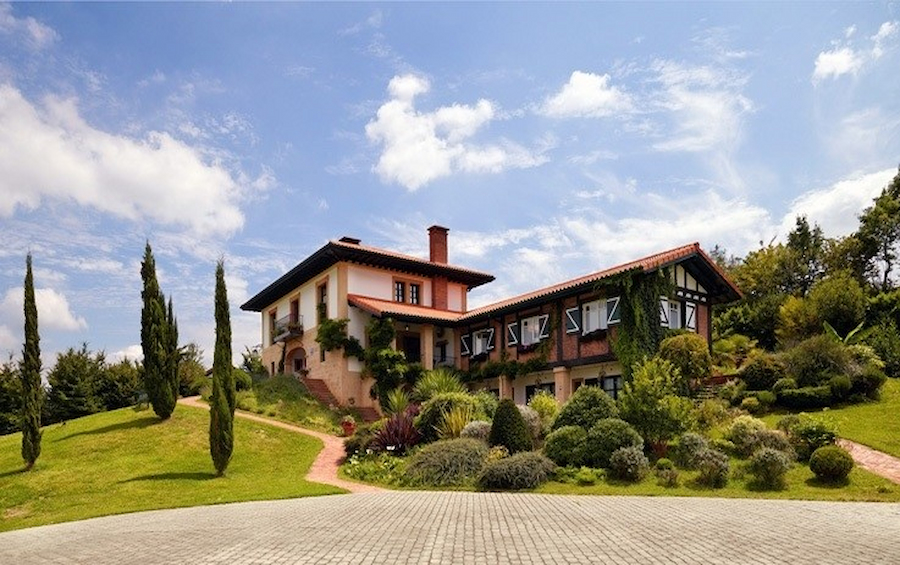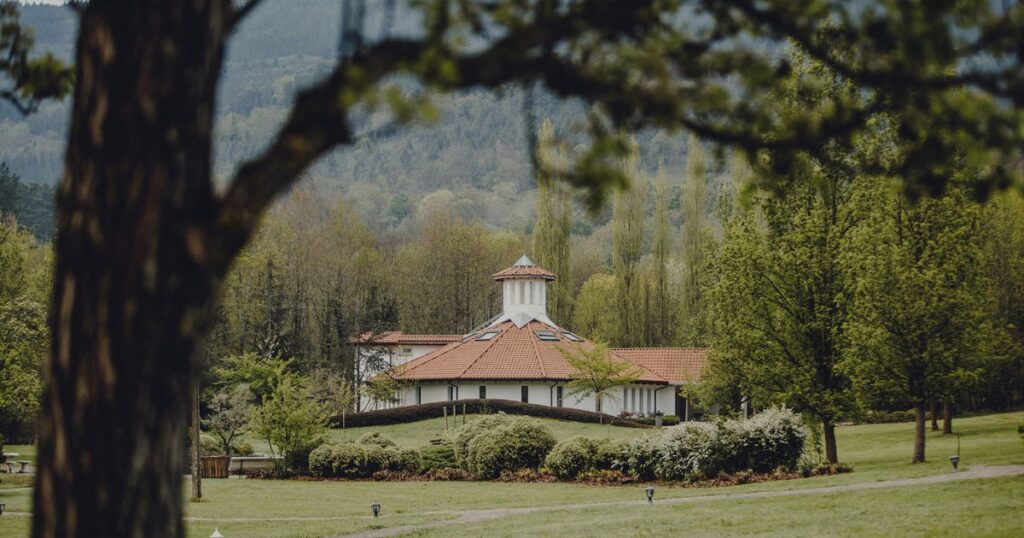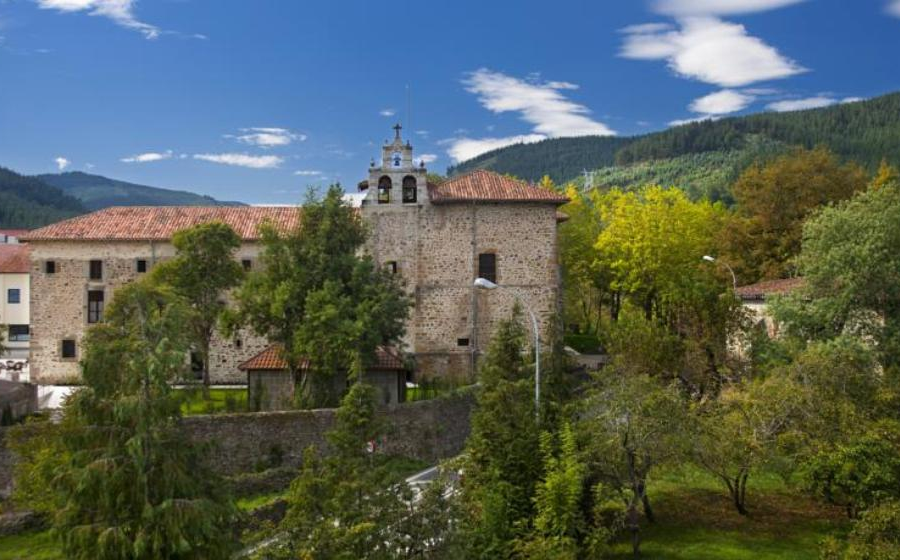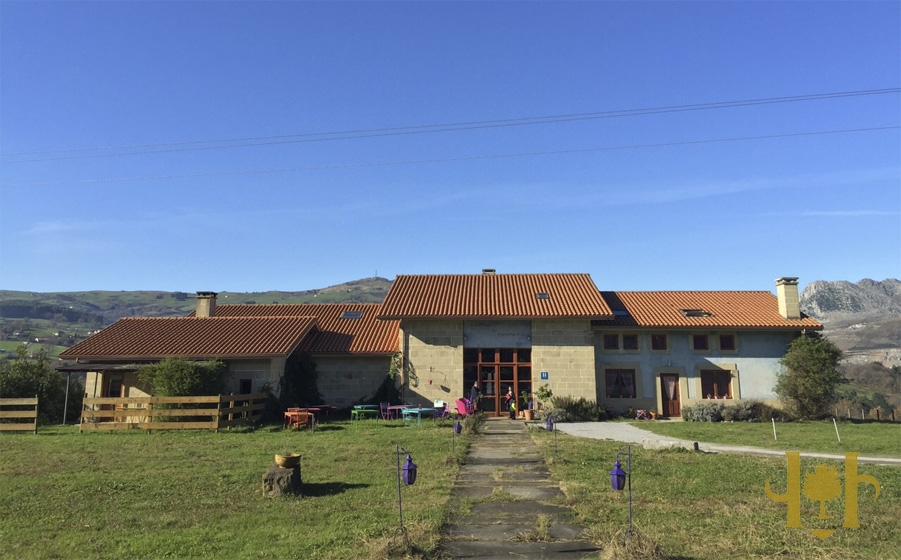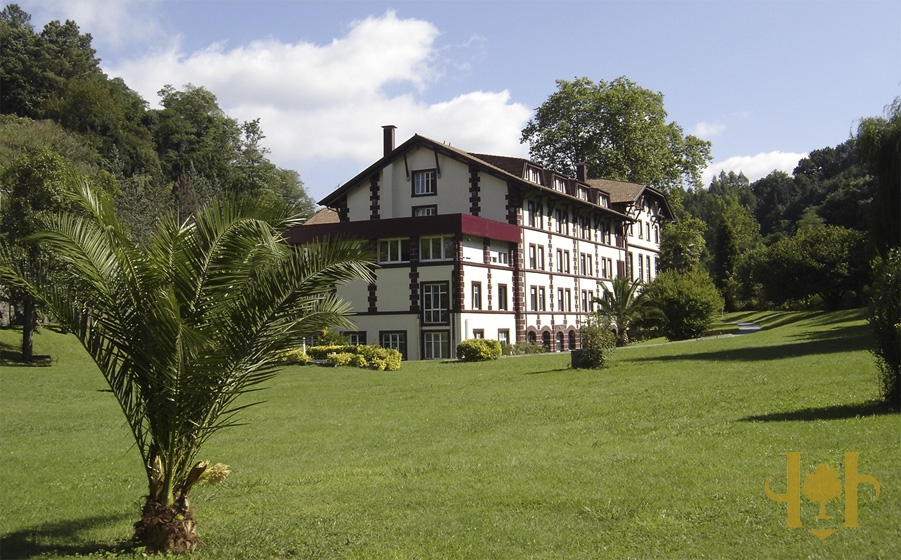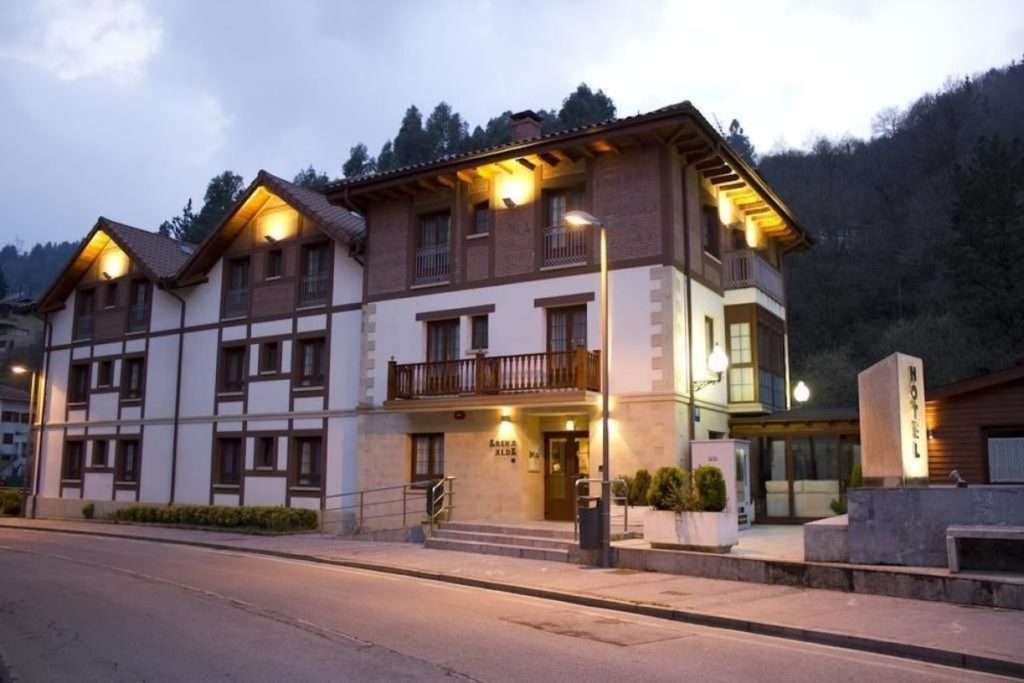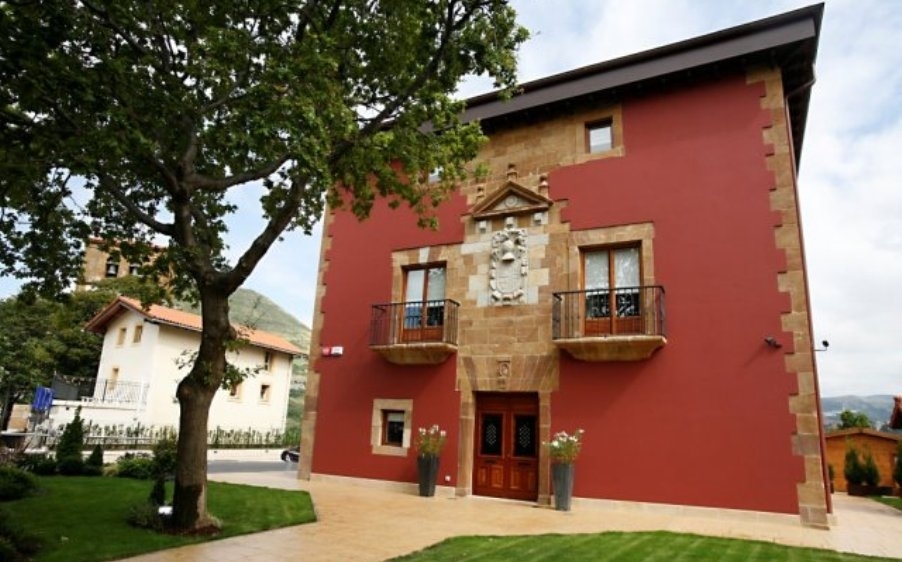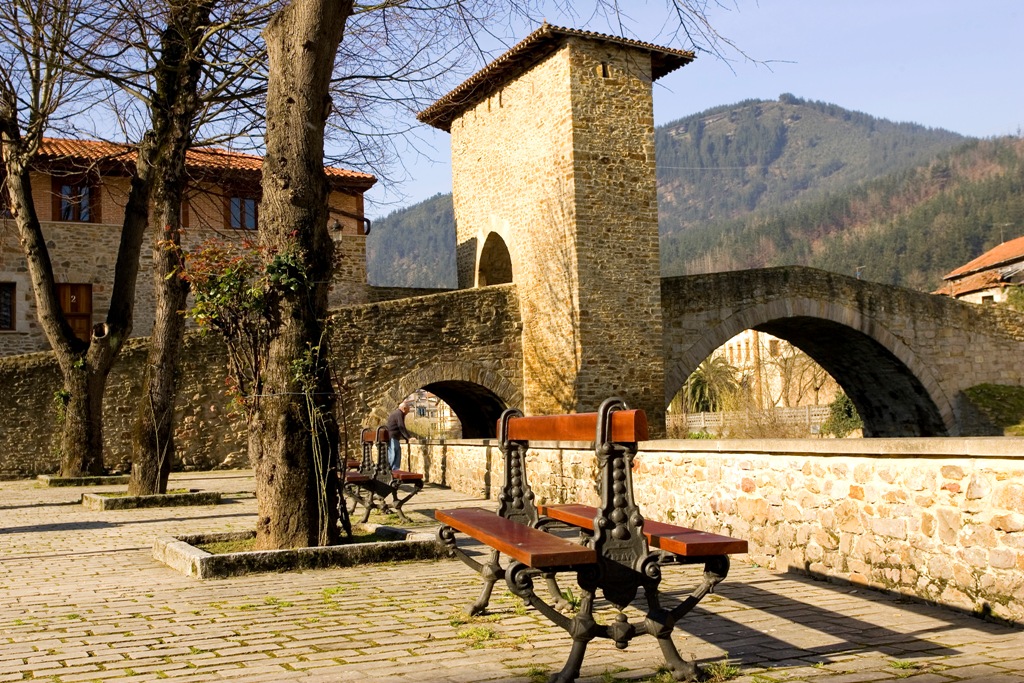
Balmaseda is the oldest town in Biscay, founded on 24 January 1199 when Don Lope Sánchez de Mena, Lord of Bortedo, granted the town a charter because it was located in a special place: a crossroads where traders and merchants came together.
Over the years, Balmaseda has managed to conserve its character and traditions while adapting to the modern age.
Useful information:
| Tourism Office Enkartur | Tel.: 946 802 976 / E-mail: info@enkartur.net |
| Festivities of San Severino | 23 October |
Tourist attractions: What to see in Balmaseda
The town’s historical heritage, gastronomy and cultural events held throughout the year make it worthy of more than one visit:
Puente Viejo (Old Bridge) aka ‘Puente de la Muza’
The most representative image of Balmaseda is the 13th-century bridge that was the ancient entrance to the town as an essential stopover on the ancient Camino de Castilla (Way of Castile).
After crossing the bridge you come to the historical quarter, an area full of history and culture, starting with San Lorenzo -the old Jewish quarter- and then the Monumental Ensemble of Santa Clara with its Interpretation Centre for the town’s passion play, the Plaza de Las Escuelas and the Palacio de Horcasitas, the old Royal customs post of the town and finally the Palacio de Urrutia, before reaching Balmaseda’s main square: San Severino.
Casa Consistorial (Town Hall) and the Church of San Severino
The town hall of Balmaseda is located in Plaza de San Severino. It was built in the early 18th century as a mountain-style Baroque mansion, although its current appearance has little to do with its original configuration. The building is popularly known as ‘La Mezquita’ (The Mosque) due to its portico with columns that recalls Mudejar-style constructions.
The 14th-century Gothic church of San Severino stands next to the Town Hall.
Museo de la Historia (History Museum)
This museum in Plaza de San Juan is located in an 15th-century church that is not used for worship nowadays. The museum contains information on the traditions and customs of Balmaseda, as well as its importance as the main town of Biscay in the past.
The town’s anthem is played three times a day from its clock tower, at 12:00, 18:00 and 20:00.
Solar Calendar Clock
Another clock of more recent construction is located nearby; inaugurated in 2008. it has a dual function: as a solar calendar and clock.
It is a fine example of geometry, mathematics and astronomy weighing 70 tons and reaching a height of 6 metres. It was made of stone by the biologist and stonecutter Manuel Gómez Arenaza.
Boinas La Encartada Fabrika Museoa (Beret Museum)
This museum occupies the site of a 19th-century factory that continued operating until 1992. It was dedicated to the manufacture of woollen products, particularly boinas (Basque berets). The museum tells the history of the town, the activity of its industrial and wool-making sectors and its working class atmosphere, taking us back to the early days of the industrial revolution.
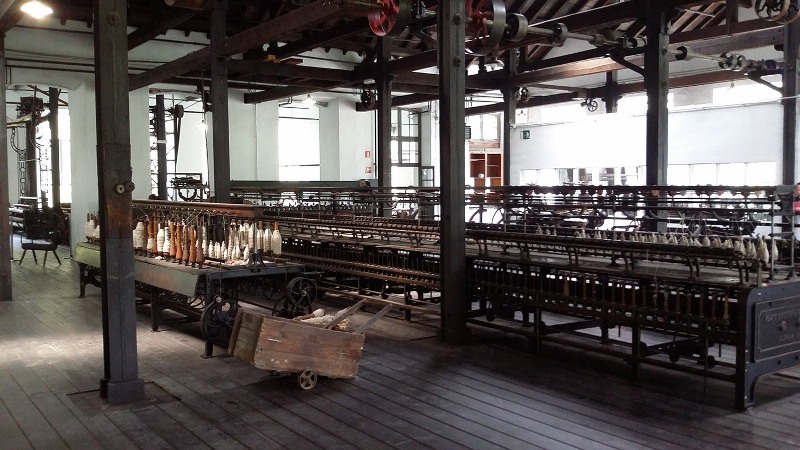
Traditions
The ‘putxera’ of Balmaseda
The ‘Putxera Ferroviaria’ is a traditional stew of Balmaseda made from beans, red onions and other ‘bits and pieces’ (blood sausage, bacon rind, chorizo and ribs). It has its origins in the past of Balmaseda as a railway town, when the railwaymen on the ‘La Robla’ train designed a small stove for their long journeys in search of coal, to prepare the stew using the heat generated by the steam from the train’s locomotive.
On 23rd October, the festivity of San Severino, a putxeras competition is held in which groups of friends get together in Plaza de San Severino to enjoy themselves while cooking and tasting their putxeras.
Mediaeval Market
For two days in May, Balmaseda goes back a few centuries and becomes a mediaeval town again: banners hang from balconies, the streets are covered with straw and the place fills up with parades, shows and stalls selling their wares
You can find out more about this well-known market in the section titled ‘What to do and see in Biscay’ > ‘Markets’ on our website.
Easter: live enactment of the Passion of Christ
When speaking about traditions in Balmaseda we cannot forget the one that is undoubtedly the best known and attracts most visitors to the town: the ‘Pasión Viviente’ represented every year in Balmaseda and a synonym for Easter in Biscay.
The town is the main tourist attraction in the province over these days, and everyone actively participates in the enactment of the final hours of Jesus Christ’s life.
The main event takes place on the night of Maundy Thursday and the morning of Good Friday, when the live enactment takes place in the streets and squares of Balmaseda. On these two days there are processions band through the streets of the historic quarter of religious floats, the Roman guard, penitents, the Kolitza choir and the town’s brass band, finishing later on Good Friday with the popular ‘Procesión del Silencio’ (Procession of Silence).
Trekking and other sports
Balmaseda has an extensive network of routes for trekking, Nordic walking and mountain biking so that visitors can enjoy its striking natural surroundings.
Trekking enthusiasts will find routes that are part of the Way of St James, such as the one that goes from La Herrera (Zalla) as far as the museum at La Encartada along the banks of the river Kadagua, or the path between Balmaseda and Gordexola (20.5 km).
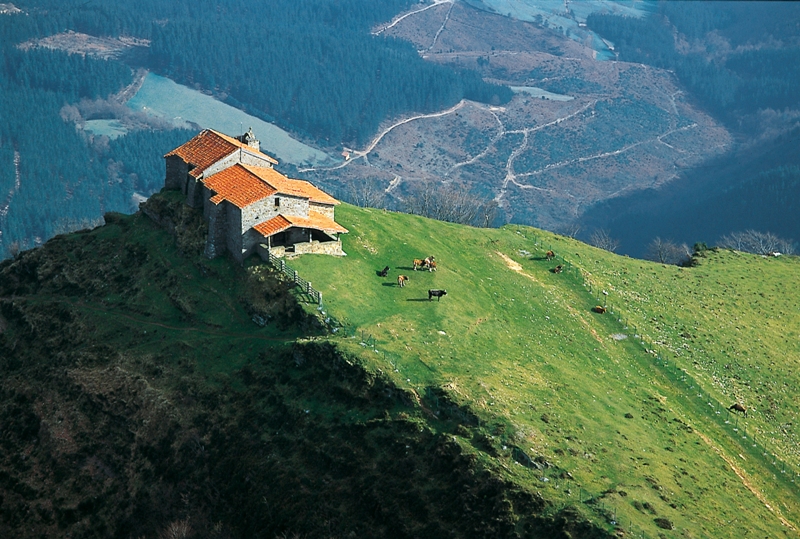
We would make a special mention of emblematic Mount Kolitza, used in the past as a ‘siren’ from which general assemblies were called by lighting bonfires and sounding bugle calls. The climb offers great views of the surrounding area up to the old ‘nevera’ (stone snow fridge) and the chapel of San Roque, and also looking down towards Balmaseda.
Photos courtesy of Enkartur
We also give you this list on Spotify so that you can cheer yourself up during your sports session on one of the routes with our selection:
Establishments nearby
Accommodation nearby

